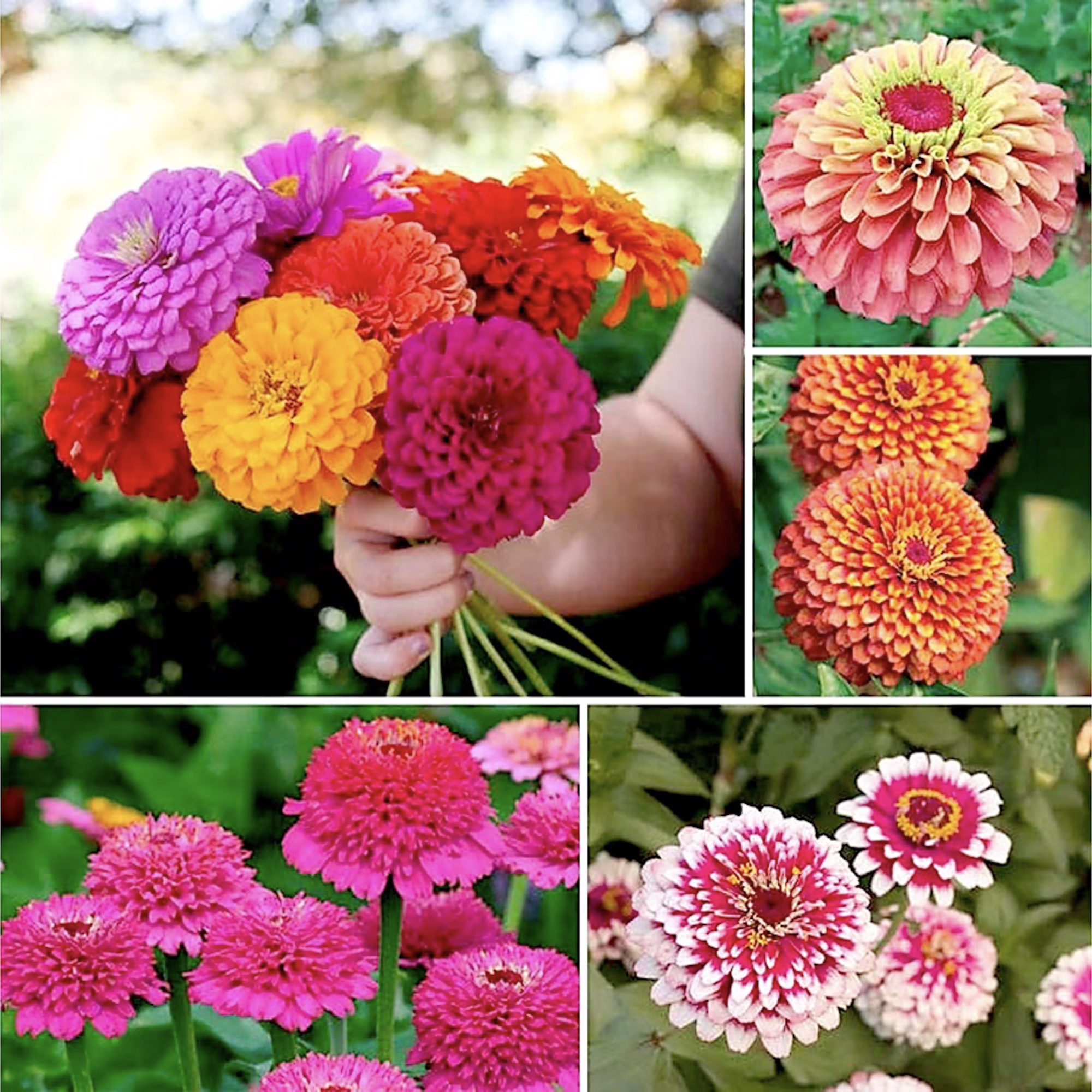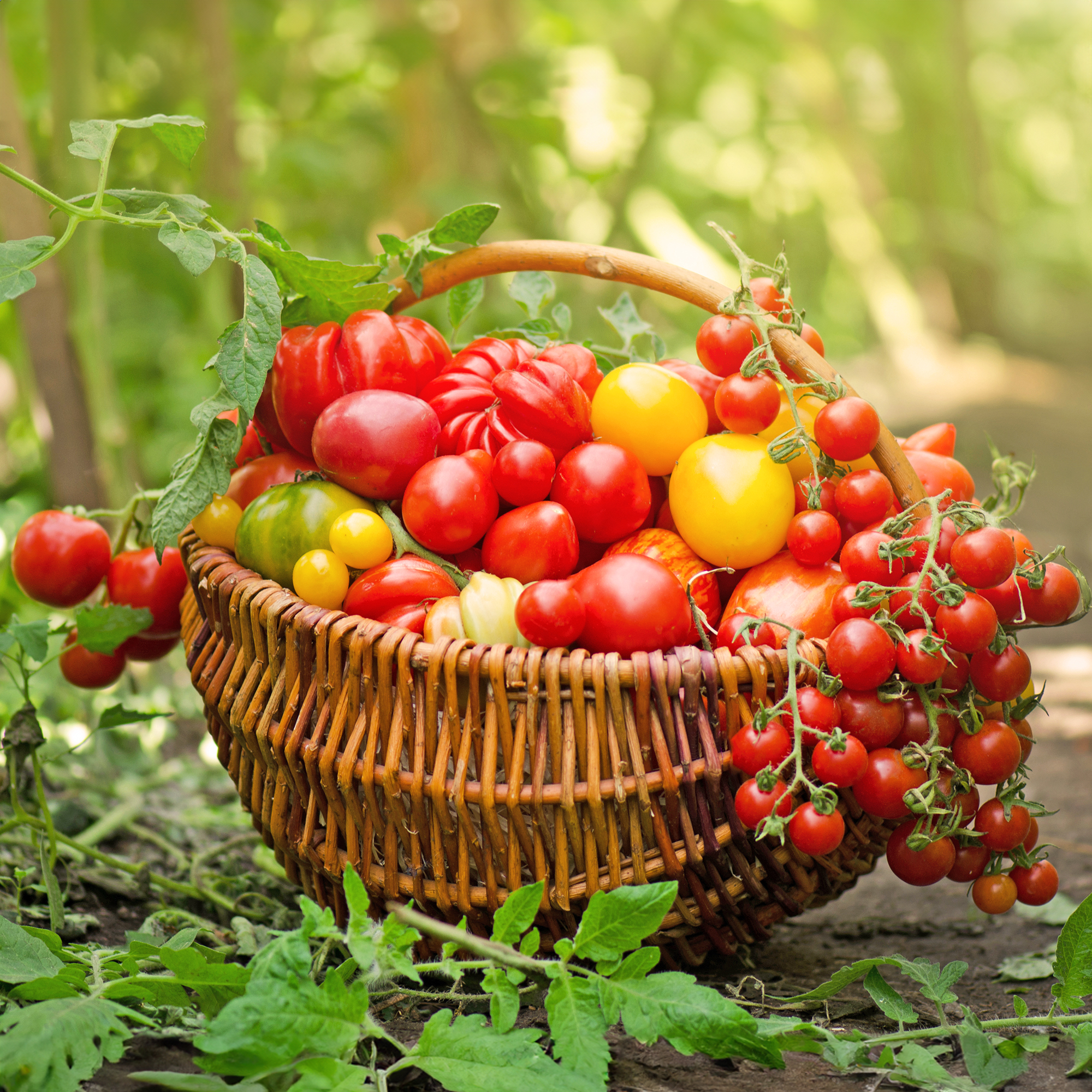8 Perfect Flowers To Plant With Tomatoes To Boost Yields & Banish Pests
Don’t forget flowers when choosing companion plants for your tomato beds or pots. These pretty, fragrant blooms add beauty but are also highly beneficial.
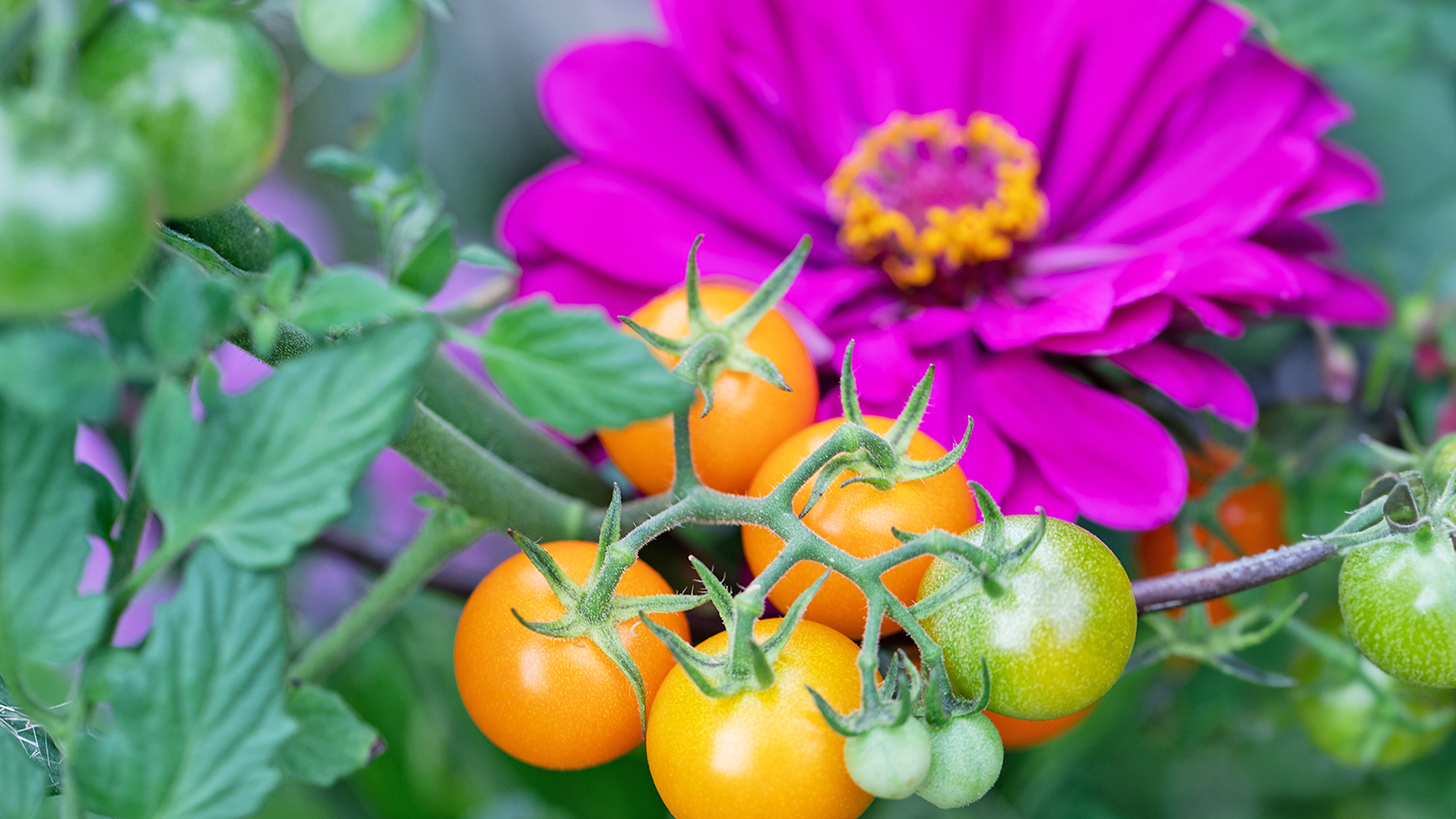

Melanie Griffiths
Planting flowers with tomatoes will enhance the beauty of your vegetable garden, but has myriad additional benefits. The practice is known as companion planting, which involves carefully pairing or arranging plants to optimize their benefits for each other. It is a tried-and-true gardening technique used in organic gardens to deter pests, attract pollinators, and even improve flavor.
Tomato companion plants are often associated with vegetables, with good partners including onions, garlic, cucumber, and peppers. However, there are also numerous beneficial herbs to plant with tomatoes, such as basil and parsley, as well as flowers. Taking a thoughtful approach to how you combine plants will make all the difference between a bumper crop and a bad harvest.
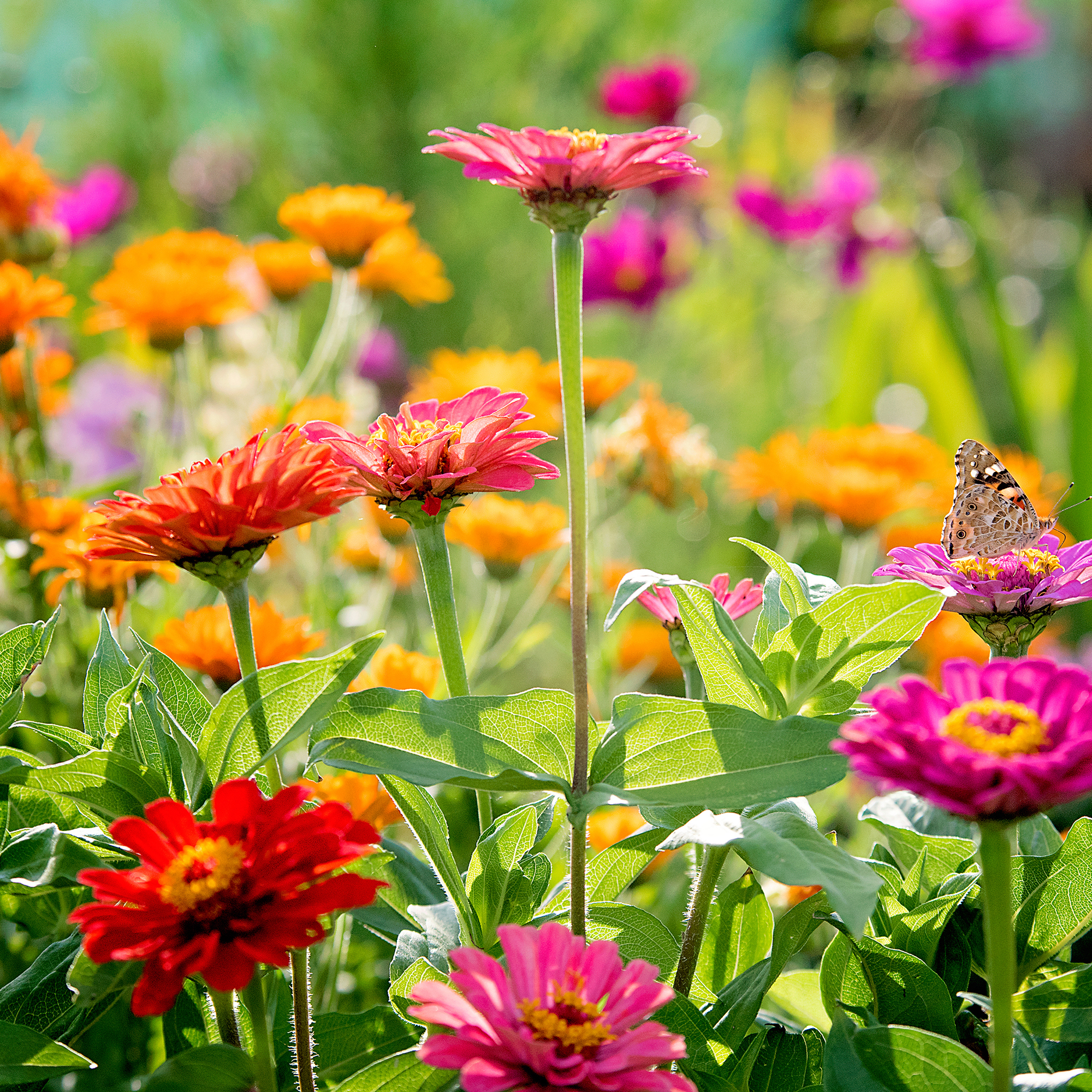
Sort through dozens of flower seeds you can grow for not only a little extra beauty in your backyard but also for a beneficial boost to your tomatoes, in the Gardening Know How Shop.
Growing specific companion flowers for tomatoes may ward off pests with a strong scent, or they may serve as trap crops and draw pests away from your tomatoes. They will attract pollinators to your garden, improving crop yields, as well as beneficial insects that will prey on pests. In addition, flowers can provide ground cover, helping to keep down weeds and retain moisture in the soil, while maximizing the use of the planting space.
So, if you want to learn how to grow tomatoes using this time-honored method, then sow these flowers at the same time as starting tomato seeds.
The Best Flowers to Plant with Tomatoes
Choose companion flowers for your tomatoes based on the benefits they can provide, how well they will grow in your beds, and also for the way they look and your personal preferences. Here are some ideas to get you started.
1. Calendula
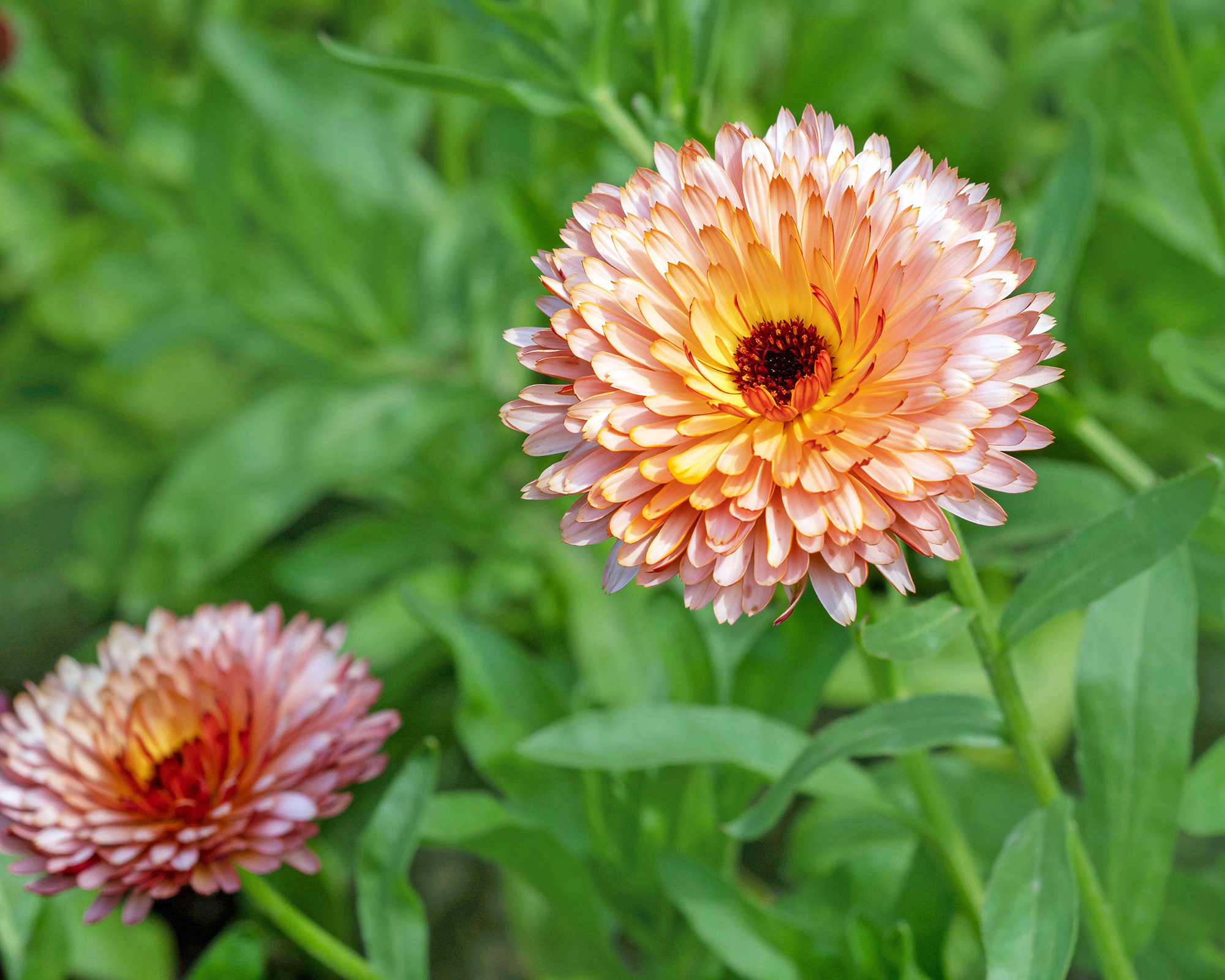
Also known as pot marigold, calendula is a pretty orange flower that looks beautiful in beds and also benefits nearby tomatoes. The strong, musky smell of the flowers repels many pests. Most importantly for tomatoes, they repel tomato hornworms but also aphids, nematodes, and some mammal pests.
Calendula has other uses besides its tomato-supporting role. The flowers are edible and have some medicinal properties, so you can enjoy them in the kitchen as well as in garden beds.
Sign up for the Gardening Know How newsletter today and receive a free copy of our e-book "How to Grow Delicious Tomatoes".
'Orange Flash’ is a particularly striking variety and is included in our Natural Remedies Seed Collection, available in the Gardening Know How Shop.
2. Marigolds
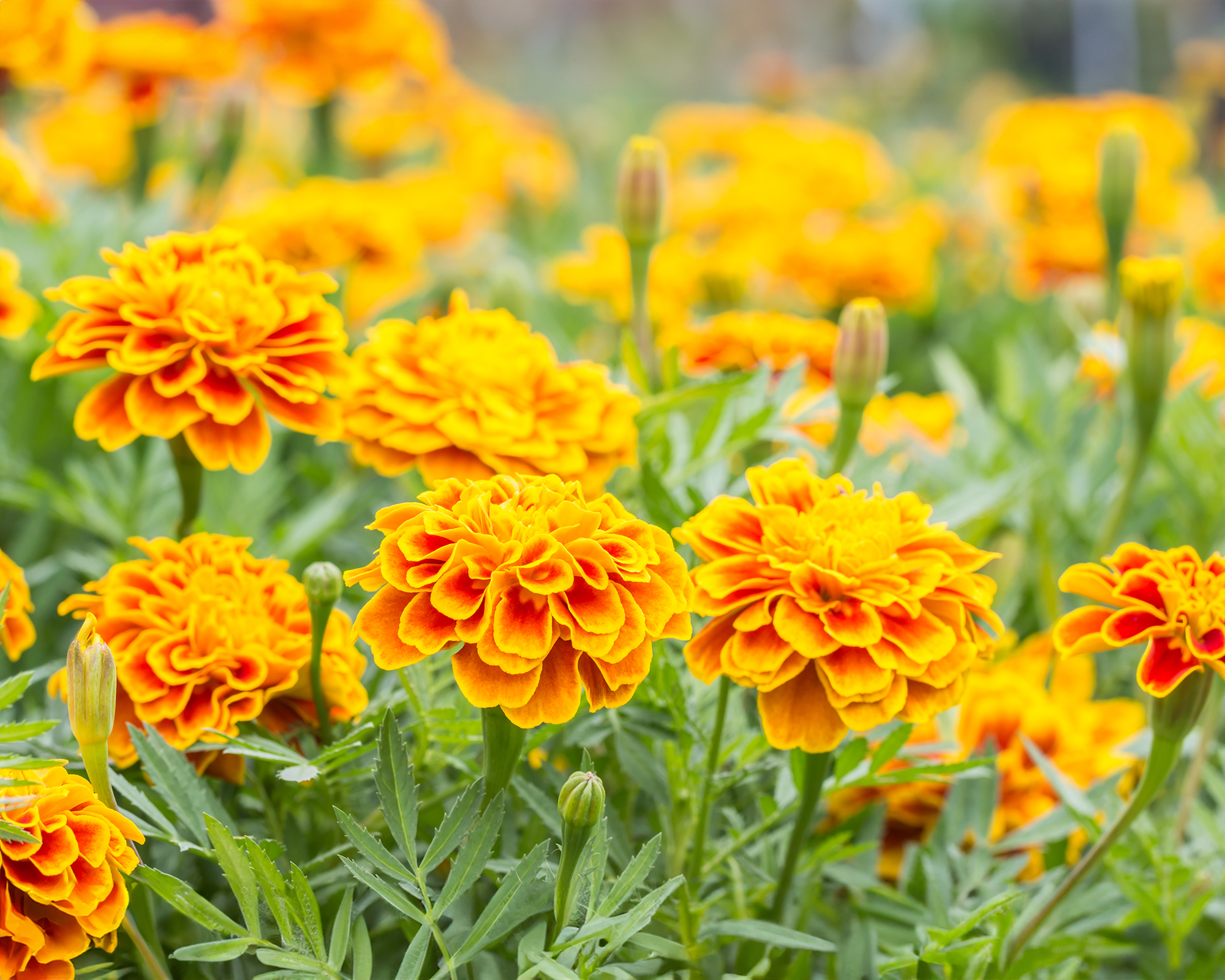
Marigolds are bright, cheerful annual flowers with a classic pom-pom shape and colors ranging from yellow to deep red. They have long been used to keep rabbits away from veggie gardens with their potent and distinctive aroma caused by a chemical called limonene. Near tomatoes, marigolds deter several pests, including rabbits, white flies, and root-knot nematodes.
French marigolds (Tagetes patula) are the best option for pest control. Choose from a range of beautiful French marigold varieties in the Shop.
3. Nasturtiums
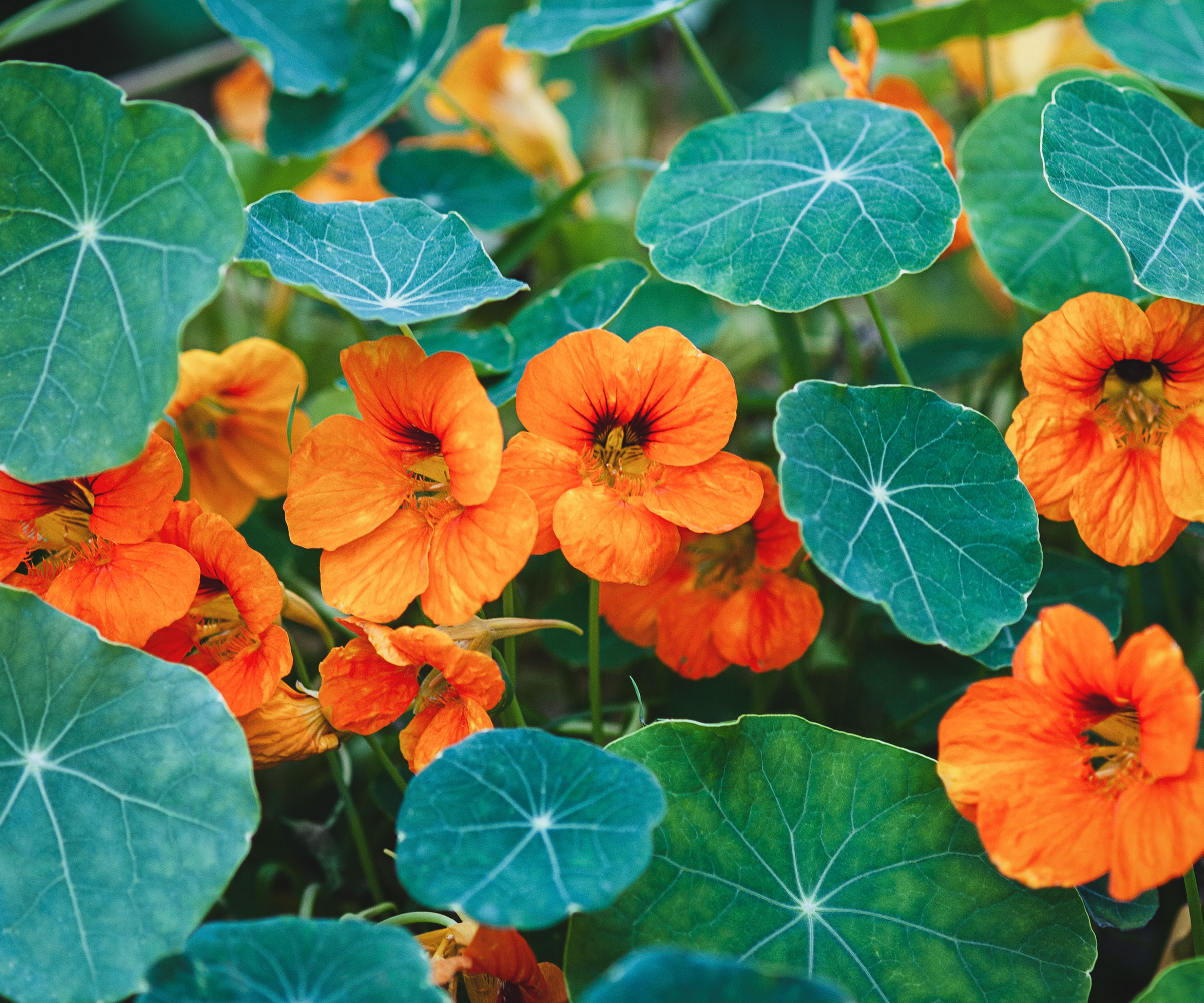
Nasturtiums act as a trap crop for some pests, including cabbage moth caterpillars, white flies, and aphids. They also attract hoverflies, which feed on aphids.
There are also some bonus benefits to growing nasturtiums with tomatoes. The plants vine and spread, providing a living groundcover to keep moisture in the soil and weeds at bay. Additionally, nasturtium leaves and flowers are edible and have a peppery flavor.
4. Lavender
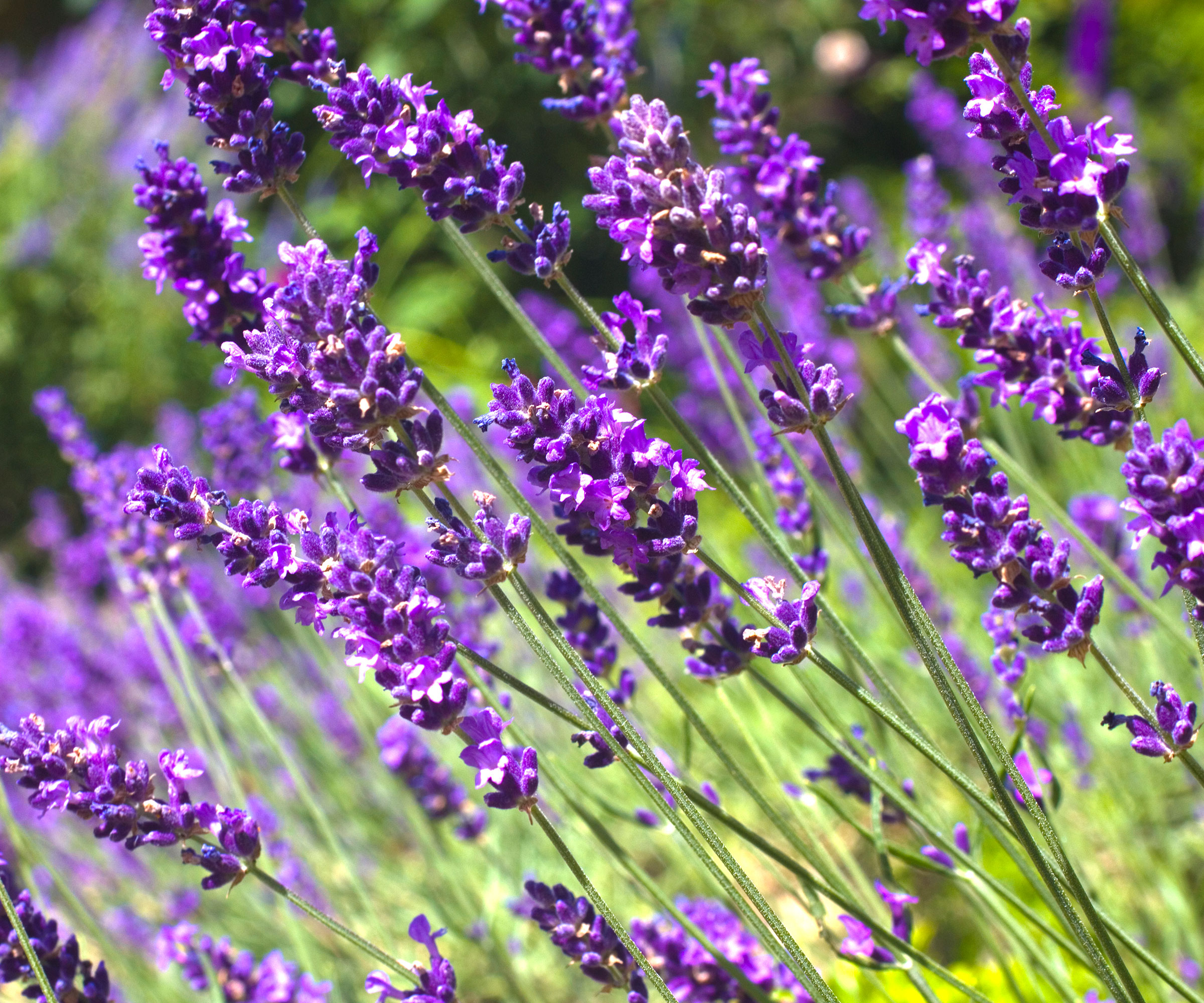
Lavender is an herb prized for its pretty, delicate purple flowers and strong aroma. That aroma is what makes plants beneficial as tomato companions. The strong smell is generally appealing to people, but keeps away certain pests that don’t like it. These include flea beetles and nematodes. Lavender flowers also attract beneficial pollinators.
Keep in mind, though, that lavender has different soil and water needs than tomatoes. Try growing them in containers near tomatoes so you can control the conditions better. Munstead lavender, available as seeds in the Shop, is a classic variety known for its compact growth and early blooming.
5. Borage
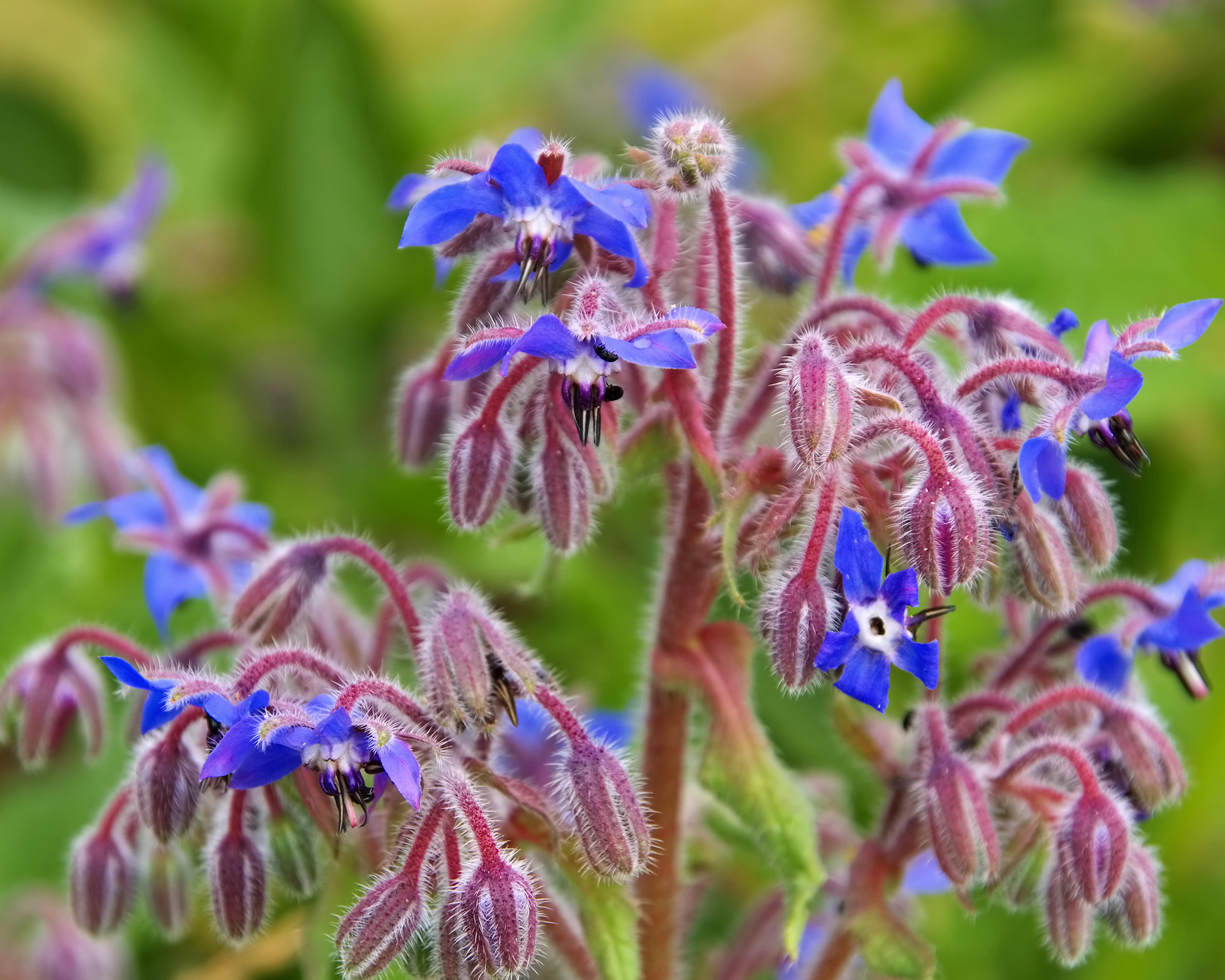
While borage is technically considered an herb, most people grow it for its flowers and as a companion plant. The vividly blue flowers are attractive and star-shaped and add interest to your tomato bed.
Borage deters hornworm but also attracts pollinators and a parasitic wasp that specifically feeds on aphids. It also adds micronutrients to the soil that can benefit the growth of tomato plants and make them healthier.
6. Cosmos
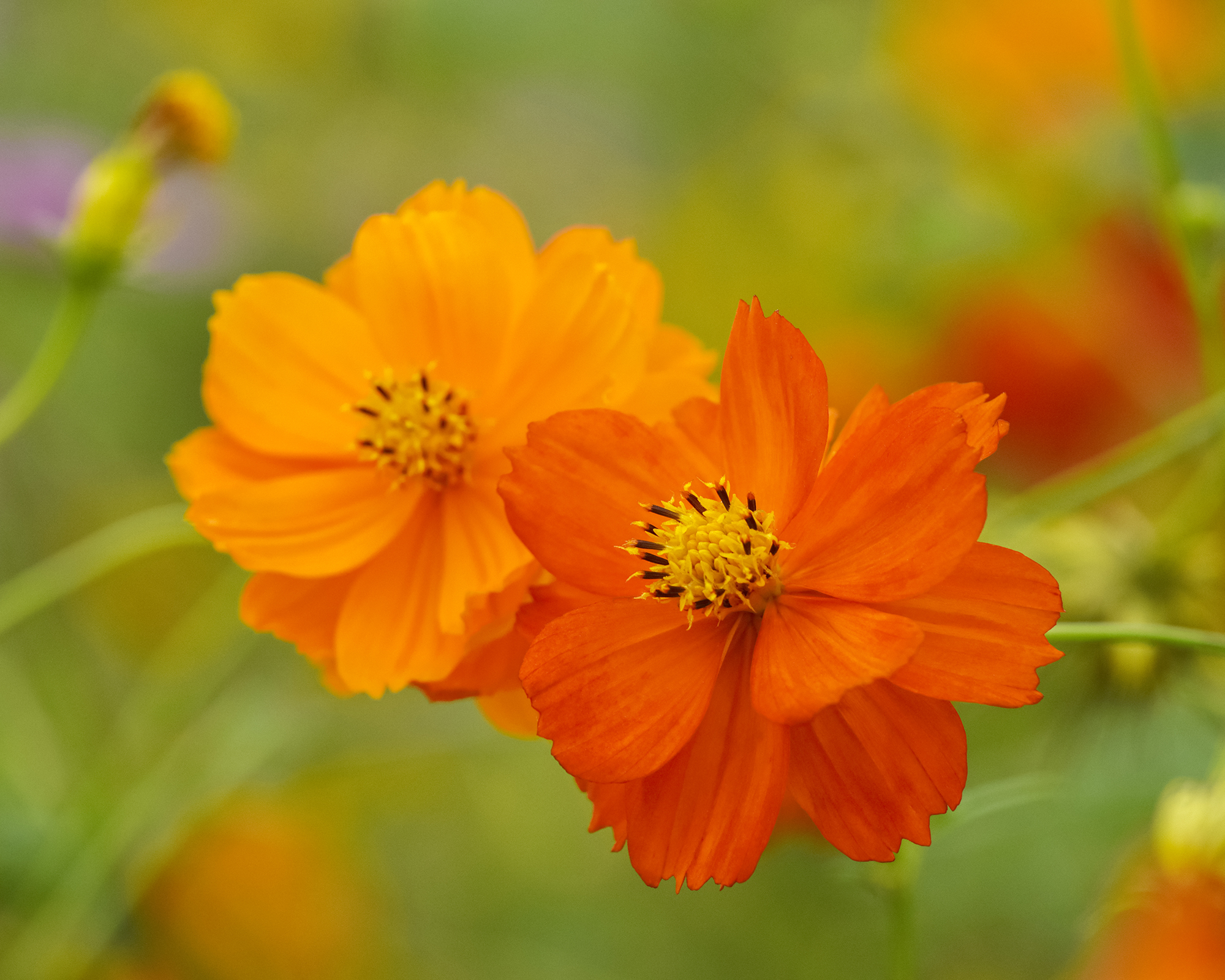
If you’re new to growing flowers, try cosmos. These easy annuals are pretty and great companions for tomatoes. They attract many beneficial insects, including both pollinators and predators of pest insects. Green lacewings, in particular, love cosmos and feed voraciously on thrips, aphids, and scale. Orange is the best cosmos color for attracting this friend.
Be aware that cosmos can grow quite tall, so don’t plant them where they will overshadow tomato plants. Find a selection of beautiful cosmos varieties in the Shop.
7. Sweet Alyssum
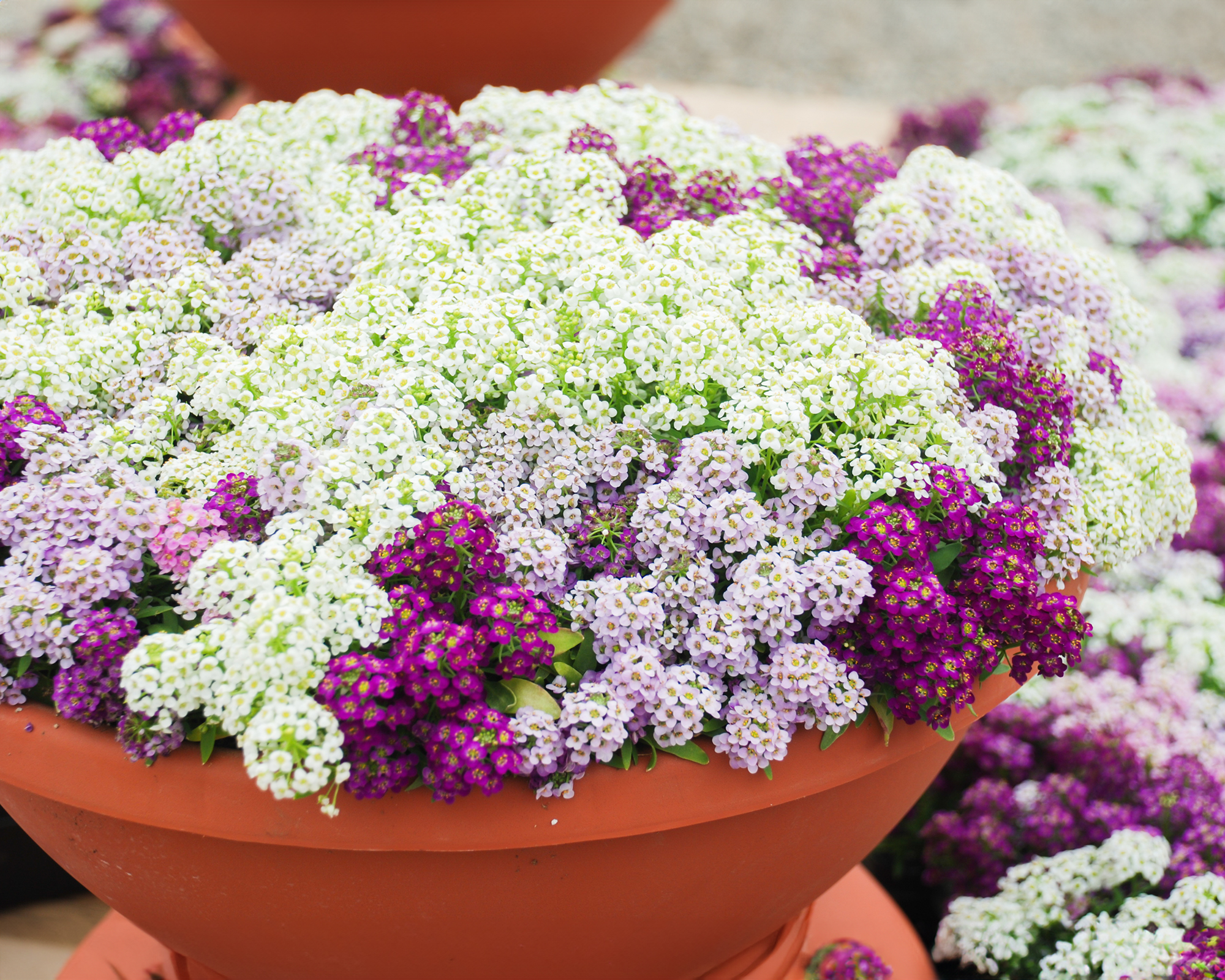
Sweet alyssum is a sweet-smelling plant with an abundance of tiny flowers. It's well known for its ability to attract predator insects that keep pests at bay.
As sweet alyssum grows close to the ground, it can provide a living groundcover. It’s particularly useful for container-grown tomatoes. Plant them at the base and let them spill over the sides. Snow Crystal, available in the Shop, is a hardy variety that adapts to different climates.
8. Zinnias
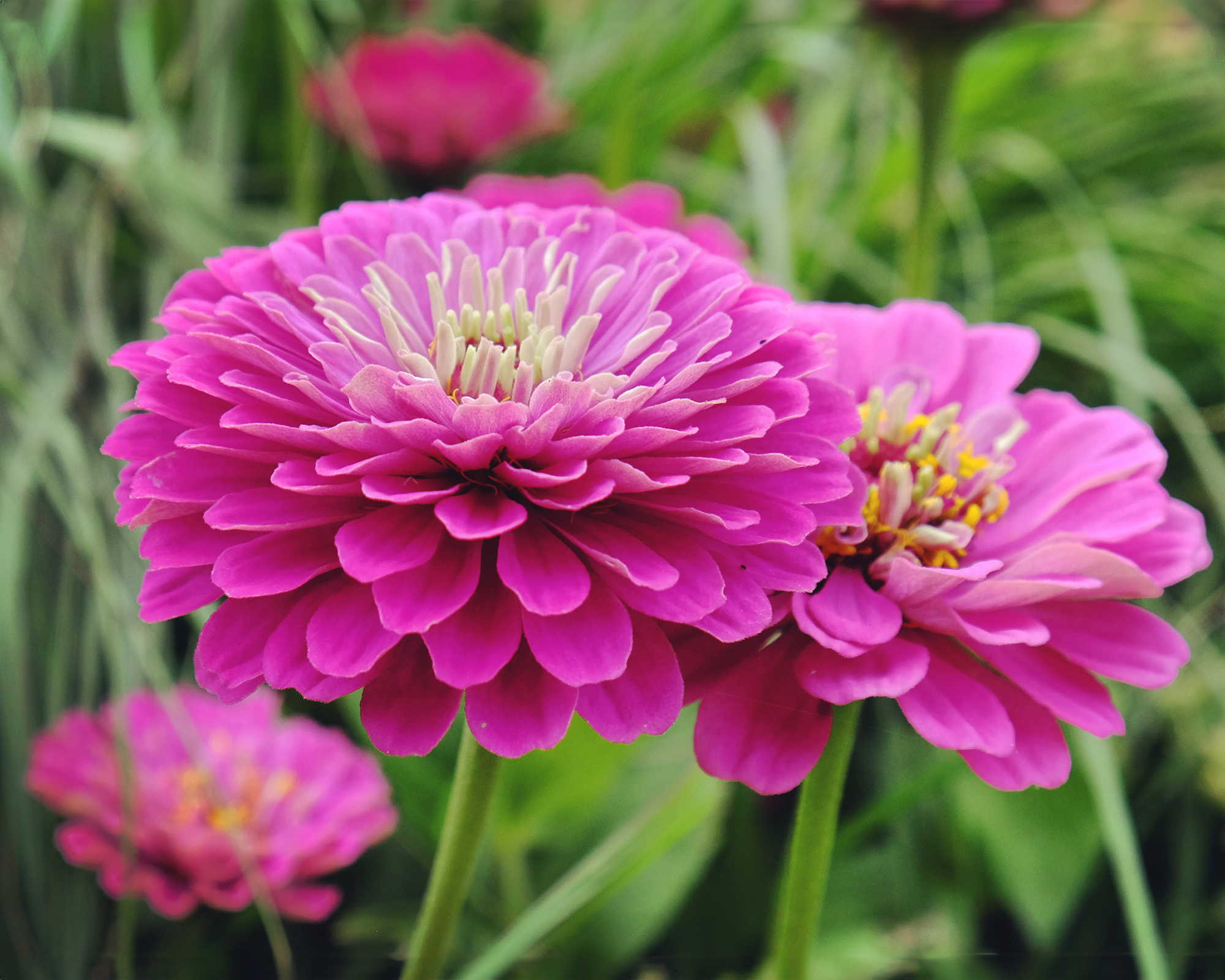
Not only do zinnias make a stunning contrast with tomatoes, but they are highly effective companion plants, blooming all through summer right up until the first frosts hit. Their main benefit is in attracting pollinators as well as beneficial insects, including ladybugs, parasitic wasps, and hoverflies.
Zinnias also make excellent cut flowers, so you can harvest a few blooms for homegrown bouquets at the same time as picking your tomatoes.
How to Grow Companion Flowers with Tomatoes
Successfully companion planting flowers for your tomatoes requires some planning and consideration. Here are some tips to keep in mind as you plan your bed:
- Don’t overcrowd the flowers or the tomatoes. Flowers don’t need to be right up against tomato plants to provide benefits. Follow spacing guidelines on seed packets or transplants to avoid crowding and encouraging a fight for resources between the plants. Alternatively, grow them in containers close by.
- Tomatoes need full sun to grow and produce, so think about how tall flowers will grow and how their placement might block the sun.
- Consider growing conditions for the flowers you choose. They should grow well in your soil type and local climate – check your USDA hardiness zone in North America. Their needs should also be similar to those of the tomatoes for the best results.
- Don’t forget to check on tomatoes and flowers. Don’t simply plant companion flowers and assume they’ll keep your tomatoes free of pests. Monitor them regularly for signs of pests to determine if you need additional control methods.
More Tomato Growing Inspiration
- Discover heirloom tomatoes you'll love to grow with our recommended best varieties for every garden.
- Learn the secrets of growing tomatoes in containers to enjoy bountiful harvests in small spaces.
- Check out the EZ Self-Watering Tomato Planter in the Shop. With an inbuilt trellis and wheels for easy repositioning, this is the perfect tomato planter.
- Do you know the difference between determinate vs indeterminate tomatoes? Find out all about them and which ones you should grow.
- Don't miss out on exclusive offers and the latest growing inspiration! Sign up to the Gardening Know How Newsletter today.
This article features products available from third party vendors on the Gardening Know How Shop.

Mary Ellen Ellis has been gardening for over 20 years. With degrees in Chemistry and Biology, Mary Ellen's specialties are flowers, native plants, and herbs.
- Melanie GriffithsEditor in Chief
